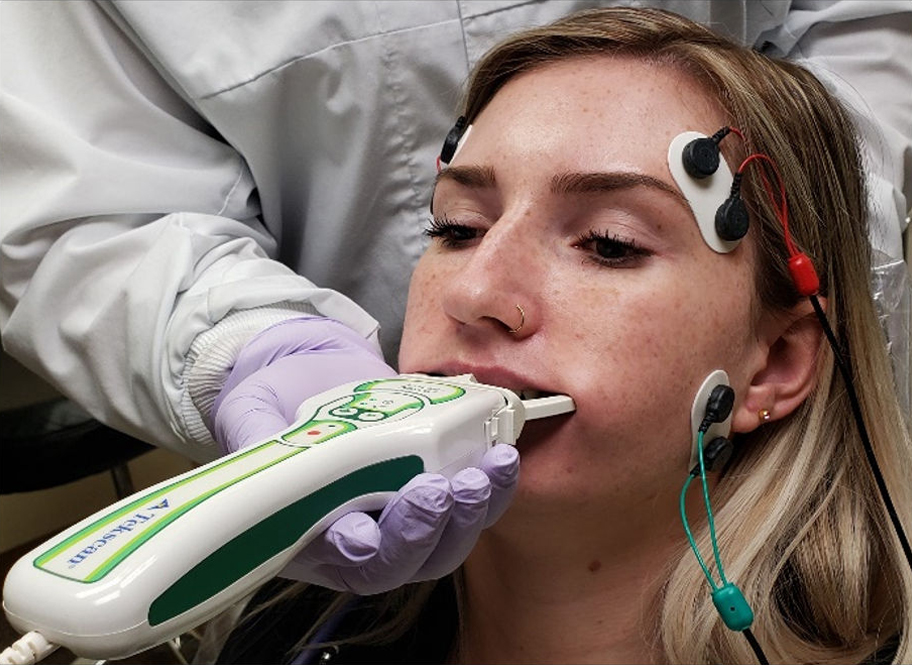- Have any questions?
- [email protected]
Trigeminal Neuralgia: Symptoms, Causes, Treatment and Medication
Have you ever experienced a sharp and sudden bullet-like pain in your face that feels like an electric shock? This pain could be trigeminal neuralgia pain, which causes extreme discomfort. Trigeminal neuralgia is a disorder that hurts the trigeminal nerve, which is responsible for facial sensations. It impacts a person's quality of life, making simple activities like eating or talking painful.
What is Trigeminal Neuralgia?

It is a severe facial pain condition that affects the trigeminal nerve. This nerve starts near the top of the ear and splits into three branches towards the eye, cheek, and jaw. This condition is often talked about as one of the most excruciating pains known to humanity, causing sudden, sharp, and intense discomfort that feels like an electric shock or a sudden stabbing sensation in the face.
Trigeminal neuralgia, or tic douloureux (which means 'painful tic'), can lead to problems such as weight loss, isolation, and depression due to its unpredictable and severe nature.
Causes of Trigeminal Neuralgia
Trigeminal neuralgia pain can have various causes, such as:
- Vascular Compression: This is the most common reason for trigeminal neuralgia and occurs when a blood vessel, typically the superior cerebellar artery, presses against the trigeminal nerve root near its entry point into the brain stem. Over time, the pulsing of the artery against the nerve can wear away the protective myelin sheath, leaving the nerve exposed and highly sensitive.
- Multiple Sclerosis: It accounts for about 2% to 4% of cases due to demyelination of the trigeminal nerve nucleus.
- Other Potential Causes: Tumours, cysts, arteriovenous malformations, or damage from facial trauma or dental procedures can cause trigeminal neuralgia.
Symptoms of Trigeminal Neuralgia
- Pain is the most frequent & dominant symptom of trigeminal neuralgia. It feels like an electric shock or stabbing sensation.
- The pain attacks typically last from a few seconds to about two minutes and can be extremely severe, often leaving individuals unable to function during episodes.
- The pain usually affects one side of the face, though in rare cases, it can involve both sides, but not simultaneously.
- Facial pain commonly occurs in the teeth, lower jaw, upper jaw, or cheek. Less frequently, it may extend to the forehead or eye.
- After the primary pain subsides, some people experience a slight ache or burning feeling. There might be a constant throbbing, aching, or burning sensation between attacks.
- Trigeminal neuralgia pain can follow a pattern of regular episodes lasting for days, weeks, or months. Rarely, this pain may disappear completely for several months or years, known as remission.
- However, severe cases can involve hundreds of attacks per day without periods of relief.
- Certain activities or movements often trigger these painful episodes, including talking, smiling, chewing, brushing teeth, washing the face, shaving, applying makeup, or even feeling a cool breeze.
Diagnosis
For diagnosis, the neurologist focuses on the type, location, and triggers of the pain. Diagnosing trigeminal neuralgia involves:
- Neurological Exam: Doctors usually conduct a neurological exam to determine which trigeminal nerve branches are affected. The doctor may touch and examine different parts of the face to pinpoint the exact location of the pain.
- Reflex Tests: These tests can help differentiate between trigeminal neuralgia and other conditions that might be causing facial pain.
- Magnetic Resonance Imaging (MRI): It can reveal potential causes of trigeminal neuralgia pain, such as multiple sclerosis, tumours, or vascular compression of the trigeminal nerve.
- FIESTA: In some cases, doctors may use a special type of MRI called FIESTA sequencing. This high-resolution imaging technique provides detailed views of the trigeminal nerve and surrounding blood vessels, helping to identify any compression.
Treatment for Trigeminal Neuralgia
- Medication: The first line of treatment for trigeminal neuralgia pain is typically medication. Anticonvulsant drugs can provide at least partial relief from trigeminal pain for up to 80% to 90% of patients.
- Surgery: For those who don't respond well to medication or experience significant side effects, surgical options are available.
- Microvascular Decompression: It is considered the most effective surgical procedure for trigeminal neuralgia relief. This operation involves moving or removing blood vessels that are compressing the trigeminal nerve. It has a long-term success rate of approximately 80% and can provide pain relief for many years.
- Other Procedures: Stereotactic radiosurgery (Gamma Knife) and various percutaneous procedures such as glycerol injections, radiofrequency lesioning, and balloon compression damage the trigeminal nerve to disrupt pain signals.
When to See a Doctor
- If you experience frequent, persistent facial pain that doesn't respond to standard painkillers, it's time to see your doctor.
- Trigeminal neuralgia pain can be severe & intolerable, so seeking medical attention is crucial for trigeminal neuralgia relief.
- If you experience any 'red flags' such as sensory or motor deficits, deafness, optic neuritis, or bilateral facial pain, you should seek urgent medical attention.
Prevention
While there's no guaranteed way to prevent trigeminal neuralgia pain, certain lifestyle adjustments can help manage the condition & reduce the frequency of flare-ups. These include:
- Modify Daily Activities That May Trigger Pain: People with trigeminal neuralgia might need to change how they brush their teeth, avoid direct exposure to cold winds, or alter how they engage in conversations. Taking breaks during long talks can help prevent pain episodes.
- Exercises: Incorporating gentle exercises specifically designed for facial pain can help relax facial muscles and reduce tension that might contribute to pain.
- Stress Management: Establishing a regular, stress-free routine can help manage the psychological stress that may worsen trigeminal neuralgia pain.
- Diet: Diet is a key component of your strategy for managing trigeminal neuralgia. Keeping a food diary can identify potential triggers. Soft, easy-to-chew foods can lessen the strain on the jaw and facial muscles, potentially reducing pain episodes. It's also advisable to avoid extremely hot or cold beverages, as temperature extremes might trigger nerve pain.
Conclusion
Trigeminal neuralgia pain is a challenging condition that can have a huge impact on a person's quality of life. The sudden, intense facial pain it causes can make everyday activities difficult and lead to emotional distress. Understanding the symptoms, causes, and available treatments is crucial to manage this condition effectively. With proper diagnosis & a tailored treatment plan, many people can find relief & improve their overall well-being.
FAQs
1. Can trigeminal neuralgia be cured?
While there's no definitive cure for trigeminal neuralgia pain, various treatments can help manage the condition effectively. Medical and surgical options are available to alleviate the pain, especially when managed by expert physicians and surgeons. Most people with trigeminal neuralgia can successfully manage their condition for many years with medication. However, it's important to note that trigeminal neuralgia is typically a long-term condition, and periods of remission may become shorter over time.
2. Is trigeminal neuralgia permanent?
Trigeminal neuralgia is usually a long-term condition. While it may not be permanent in the strictest sense, it often requires ongoing management. Many individuals experience periods of remission, where pain disappears entirely for months or even years. However, these pain-free intervals tend to become shorter over time. With proper treatment, most cases can be controlled to some degree, allowing for improved quality of life.
3. What is the leading cause of neuralgia?
The leading cause of trigeminal neuralgia pain is typically a trigeminal nerve compression. In about 95% of cases, this compression occurs near the opening where the nerve enters the brain stem. Most often, an artery or vein presses against the nerve, wearing away its protective outer layer (myelin sheath). This can lead to the nerve becoming hypersensitive and causing pain signals. In rare cases, trigeminal neuralgia can result from conditions like multiple sclerosis or tumours affecting the trigeminal nerve.
4 How do you confirm trigeminal neuralgia?
Diagnosing trigeminal neuralgia involves a comprehensive approach. Doctors typically start with a detailed medical history and physical examination. They'll ask about your pain's frequency, intensity, and triggers. Since there's no single definitive test for trigeminal neuralgia, knowing the nature of the pain is crucial for diagnosis. Doctors may recommend imaging tests like MRI scans to rule out other conditions and potentially identify blood vessel compression on the trigeminal nerve. In some cases, advanced MRI techniques can help visualise where a blood vessel is pressing against a branch of the trigeminal nerve.
5. How does trigeminal neuralgia start?
Trigeminal neuralgia usually starts spontaneously, often without a clear trigger. However, it can sometimes be associated with facial trauma or dental procedures. The onset typically involves sudden, severe facial pain that feels like an electric shock. These pain attacks are usually brought on by activities that involve lightly touching the face, such as washing, eating, or brushing teeth. Wind or even a slight breeze can also trigger an episode. As the condition progresses, pain episodes may become more frequent and intense.
6. Is trigeminal neuralgia worse at night?
While trigeminal neuralgia pain can occur at any time, it's not typically worse at night. The pain is often described as occurring during waking hours, not while the individual sleeps. However, the unpredictable nature of the pain can significantly impact sleep quality and overall quality of life. The fear of pain may lead to anxiety about sleeping, but the condition itself doesn't necessarily worsen during nighttime hours.



